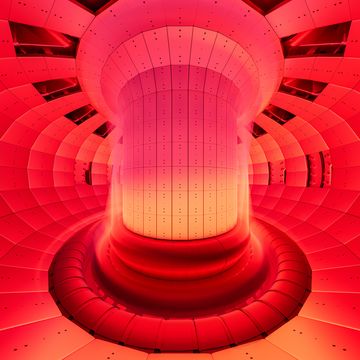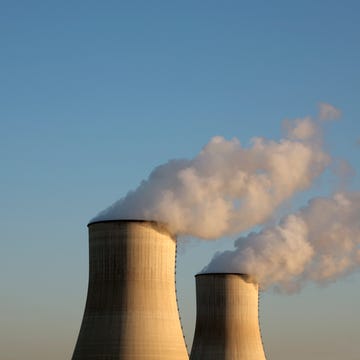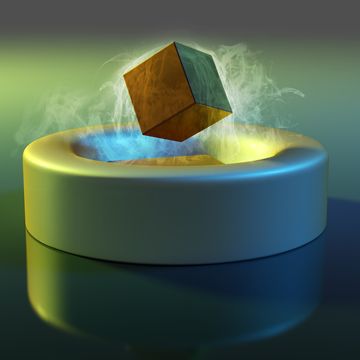In a press release last month, defense contractor Lockheed Martin announced that its in-house fusion reactor program could produce a working prototype in as few as five years—and a practical, working system that could take the place of a conventional power plant on the grid within ten years.
It's a bold claim by a single company—one that not even people behind the multinational, multibillion-dollar ITER fusion power research effort in France is making. If it holds true, it could overturn the energy industry with essentially limitless clean energy that could serve humanity for thousands of years, Columbia University physicist Mike Mauel tells PM.
Yes, we know, you've heard this one before. But the Lockheed Martin team says it can get to economically viable fusion power faster and more affordably than ITER by reducing the size of the system from something that takes up an entire building to something that could fit on a tractor trailer. The key is in the containment system needed to hold the 150-million-degree plasma that must be generated to start controlled fusion and harvest the energy created.
ITER and most of the other most promising designs use a torus-shaped configuration of superconducting magnets called a tokamak to contain the super-hot high-pressure plasma. Although intense research has focused on these since they were invented in the 1950s in the Soviet Union, no one has yet managed to get a tokamak design to drive a practical fusion power plant. ITER, using the biggest, most powerful magnets in the world, seeks to address the challenges that a future commercial system would face.
"The basic science of how to make a fusion plasma is not quite done yet," Mauel says. "We're still learning."
Lockheed's approach would use a new configuration of magnets that would allow the entire system to be ten times smaller than a tokamak. That would greatly reduce the cost. This video from Lockheed Martin gives a little more detail on how it would work.
A Lockheed Martin spokesperson tells us the company has been spending its own money on the project, and is coming out about it now to attract development and funding partners. She wouldn't say how much the company has spent so far.
Mauel, for one, is cautiously optimistic about Lockheed Martin's fusion project.
"When we have struggled with the challenges with making fusion work, and then someone comes up and says, 'Well, I'm going to have something going in five years,' and they haven't even built a prototype yet, maybe they're premature in their announcement," he says. "On the other hand, I think that discoveries can be made…. By looking broadly like Lockheed Martin is doing, and coming up with something that hasn't been tried before, there's a potential that you can make a discovery that may make it easier, and I haven't ruled that out."














